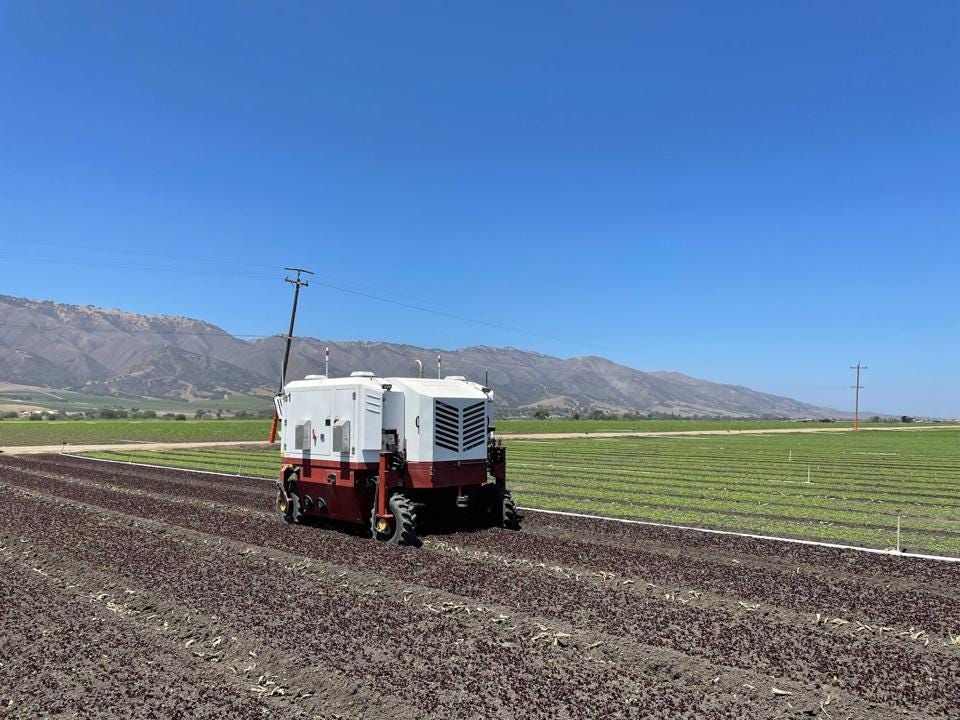Welcome to Thursday Things! If you enjoy this edition, please click the heart icon in the heading or at the end of the post to let me know. You can also post a comment by clicking the dialog bubble next to the heart.
This week’s Thursday Things is brought to you by lots of coffee. Photo by Sixteen Miles Out on Unsplash
Space - the final frontier! Age of Discovery 2.0 is a new 6-part podcast series about the future of space exploration, economic development, and settlement. Here’s the pitch:
Today, an Age of Discovery 2.0 is upon us. With Elon Musk promising rocket launch costs at $200/kilo (one percent of the Space Shuttle’s launch costs, with much lower costs to come), the price of sending explorers to space will soon match the cost of a ticket on the Mayflower in 1620. In a few decades, the Moon, Mars, and other planetary bodies will be as accessible to humans as the New World was in the Age of Sail.
How will the Age of Discovery 2.0 change our civilization the way the first one did five centuries ago?
To find the answer, History Unplugged is interviewing historians, scientists, and futurists who have spent decades researching this question by looking at the past to understand the future.
And here are the episode titles:
Episode 1: Welcome to the Age of Discovery 2.0 (Click here for detailed notes)
Episode 2: America’s Destiny in Space, with Glenn Reynolds (Click here for detailed notes)
Episode 3: Space Colonization Will Reinvigorate Humanity More Than the New World Discovery 500 Years Ago (Click here for detailed notes)
Episode 4: How to Make Space Colonies Less Like Colonial Virginia’s Slave Plantations and More Like New England’s Free States (Click here for detailed notes)
Episode 5: Death is an Inevitable Part of Discovery, Whether on Magellan’s Voyage or a Trip to Mars (Click here for detailed notes)
Episode 6: Star Wars — What Warfare Will Look Like in Outer Space (Click here for detailed notes)
It’s all fun and games until Smaug comes home unexpectedly. World’s largest ‘treasure hoard’ worth over $20 billion may soon be found
A team of treasure hunters could be on the verge of unearthing the “world’s largest treasure hoard,” said to be worth over $20 billion.
The team, known as the “Temple Twelve,” have been searching in Finland for the “Lemminkainen Hoard,” which consists of gold, jewels and artifacts, since 1987.
If the hoard is discovered, it is thought it will be the most valuable haul ever found.
The group has been spending their summers searching for the treasure, working six-hour days, seven days a week.
The massive hoard is thought to include some 50,000 gemstones including rubies, sapphires, emeralds and diamonds.
Around 1,000 artifacts dating back thousands of years are also thought to be part of the hoard along with a number of 18-carat gold life-size statues.
Good luck to the Temple Twelve! (which sounds like the name of a future George Clooney / Brad Pitt film — and probably will be if they find the treasure.)
Brazil, like Australia, is always trying to kill you. Man eaten by piranhas after jumping into lake to escape bees
A man has reportedly died in Brazil after jumping into a lake to escape bees, only to drown and be eaten by piranhas.
The 30-year-old was fishing with friends when he jumped into a farm lake in the municipality of Brasilandia de Minas on Sunday, according to the local Fire Department.
A firefighter who performed the rescue said the carnivorous fish has disfigured the man's face and other parts of his body.
Condolences to the unfortunate man’s family. Never let your guard down.
I don’t even own a farm and I want a weed-killing laser robot. Self-Driving Farm Robot Uses Lasers To Kill 100,000 Weeds An Hour, Saving Land And Farmers From Toxic Herbicides
[F]armers are increasingly concerned about the long-term health impacts of continually spraying chemicals on their fields.
But not weeding will cost half your crop, killing profitability.
The solution?
A self-driving farm robot that kills 100,000 weeds an hour ... by laser.
It is called … Laserweeder!
The weeding machine is a beast at almost 10,000 pounds. It boasts no fewer than eight independently-aimed 150-watt lasers, typically used for metal cutting, that can fire 20 times per second. They’re guided by 12 high-resolution cameras connected to AI systems that can recognize good crops from bad weeds. The Laserweeder drives itself with computer vision, finding the furrows in the fields, positioning itself with GPS, and searching for obstacles with LIDAR.
It drives 5 miles/hour and can clear 15-20 acres in a day.
And it probably doesn’t sleep. Welcome to the future.
“Laserweeder: Destroy All Weeds!” Source: Carbon Robotics
Thank you for reading Thursday Things. Again, please click the hearts, comment, and use the share feature to send this issue to a friend who might enjoy it. See you next Thursday!




